Normal TimeXtender staging tables are populated with a simple SELECT <Fields> FROM <Source Table> query. While some conditions may be added to this query with incremental and data selection rules, more advanced queries can also be performed by creating a Query Table, which allows for the creation a new source table populated by a custom query executed against the source database.
Note that complex queries may increase the processing load in the source database during the transfer phase of execution.
Adding a Query Table
- To create a Query Table, right-click on an Ingest Instance Data Source and select “Manage Query Tables”.
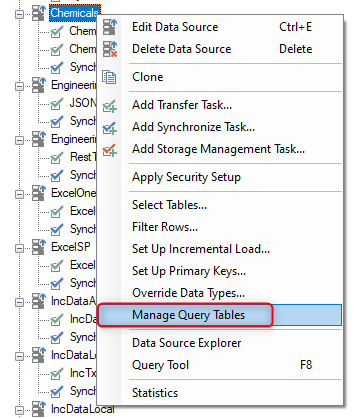
- Click the “Add” button in the Query Tables window.
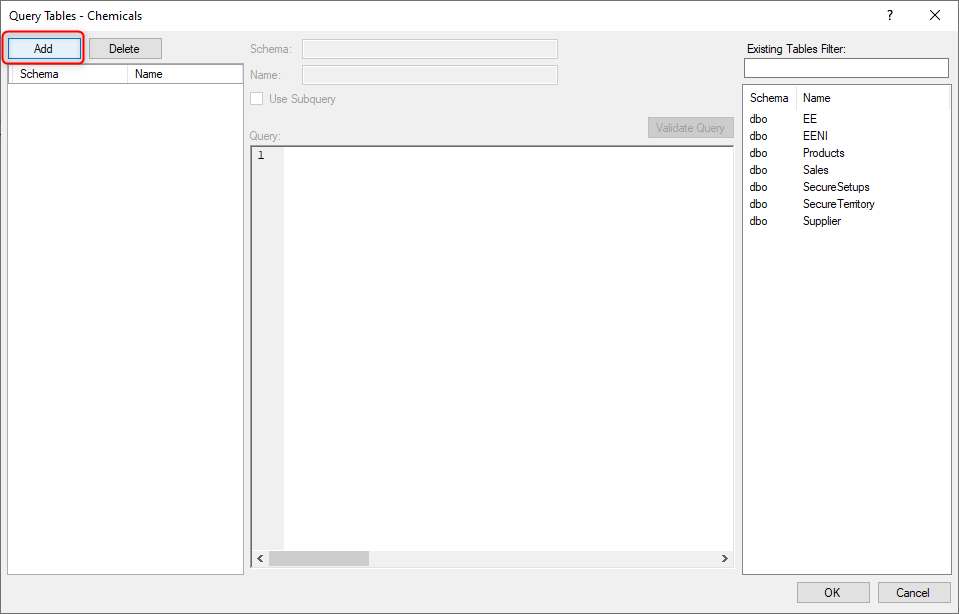
- Enter a name for the Query and amend the Schema as needed.
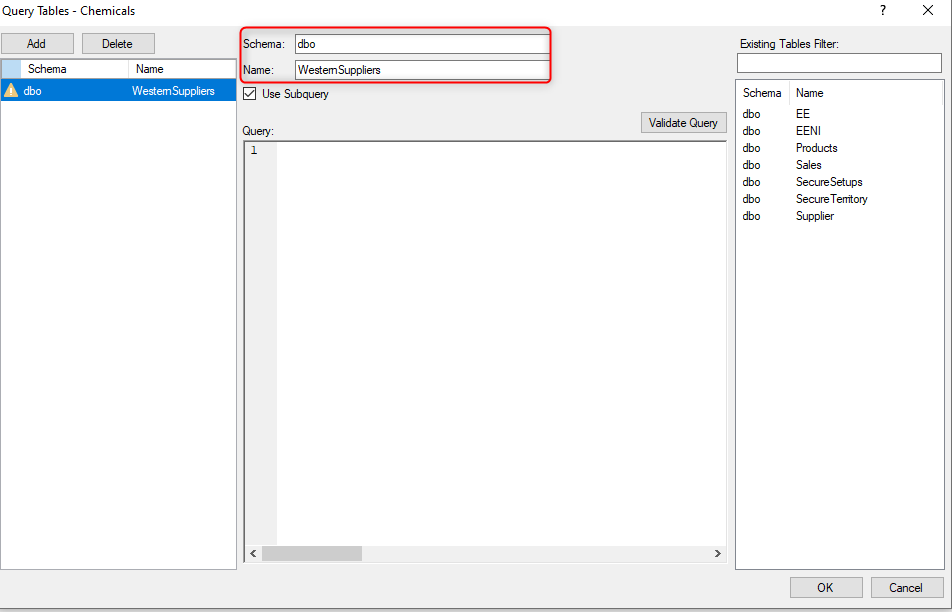
- (Optional) Drag one of the tables from the table pane on the left into the query window to begin with a standard SELECT statement for all the fields in the table.
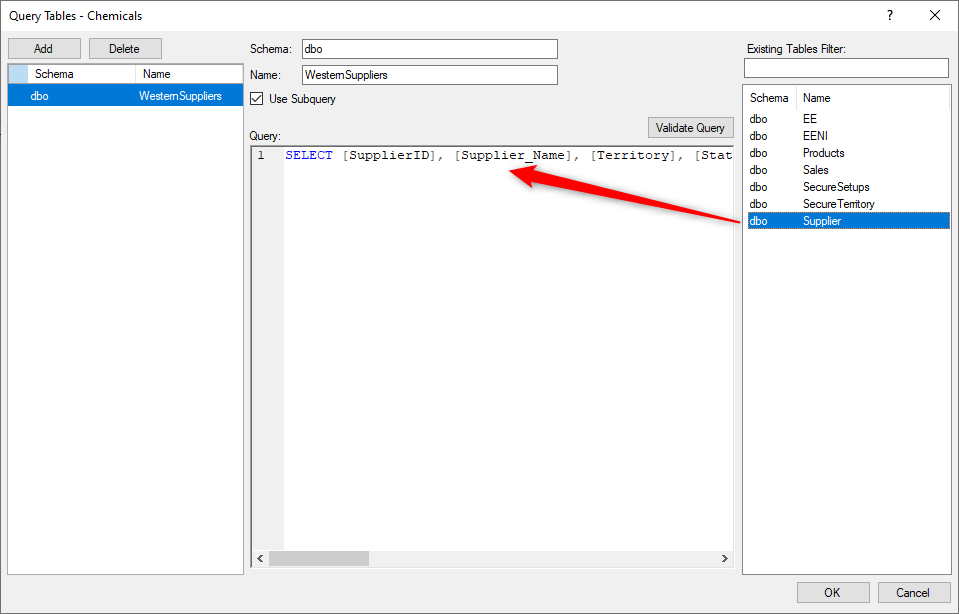
- Update this Query as needed to create the custom query, i.e. add a WHERE statement for one of the fields.
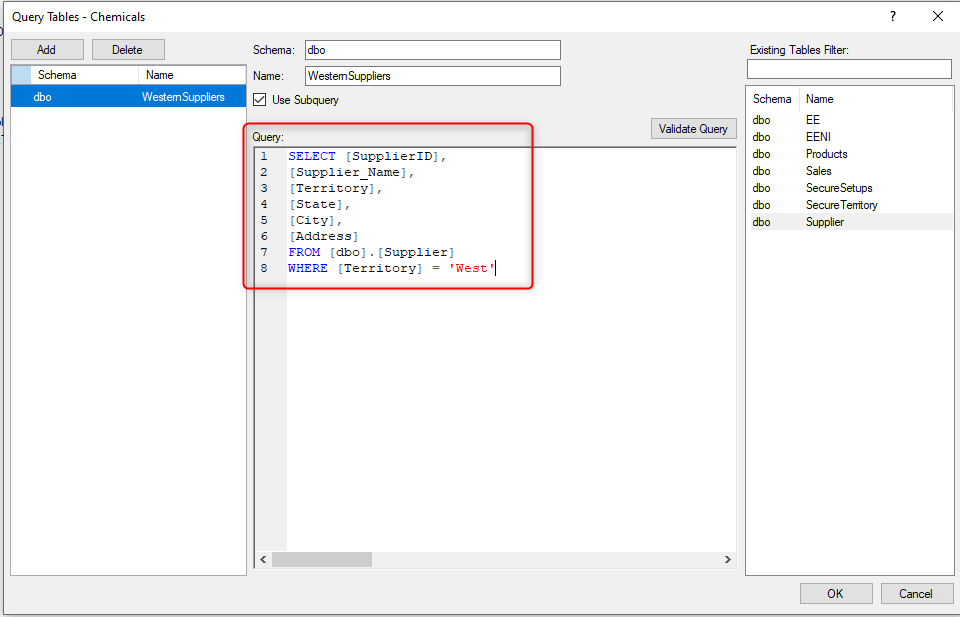
- Once the Query is complete, click the “Validate” button to have the TimeXtender Ingest Service (TIS) Server confirm the query is ok.
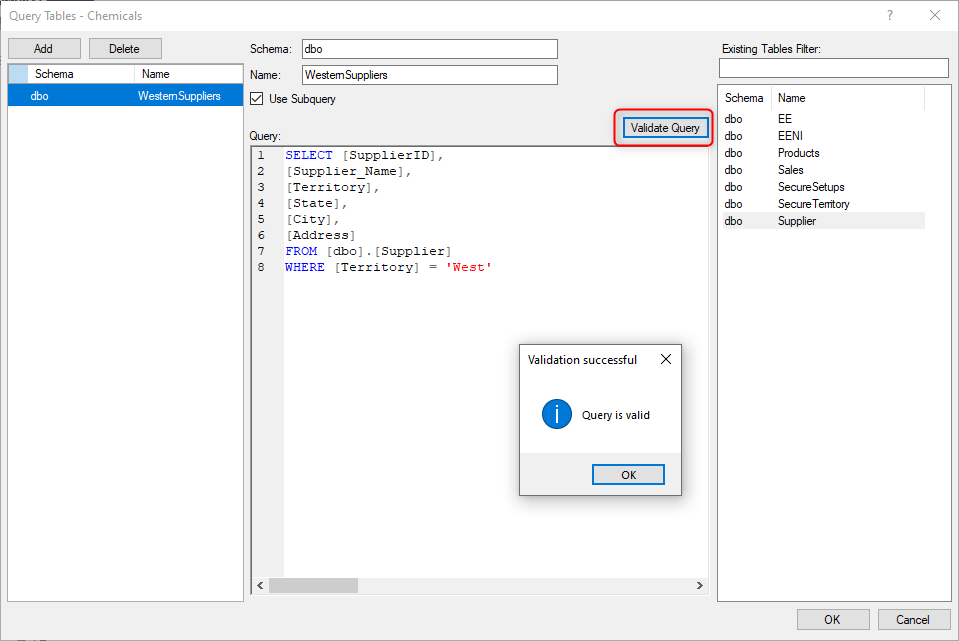
- Click Ok to create the new query table.
- Synchronize the data source.
- Right-click on the data source and click on “Select Tables”.
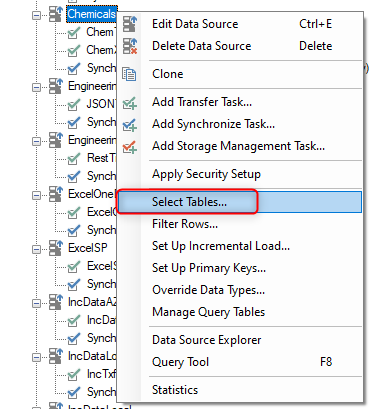
- In the Select Tables window, select the new Query Table and then click the “Add” button to add it to the selected tables.
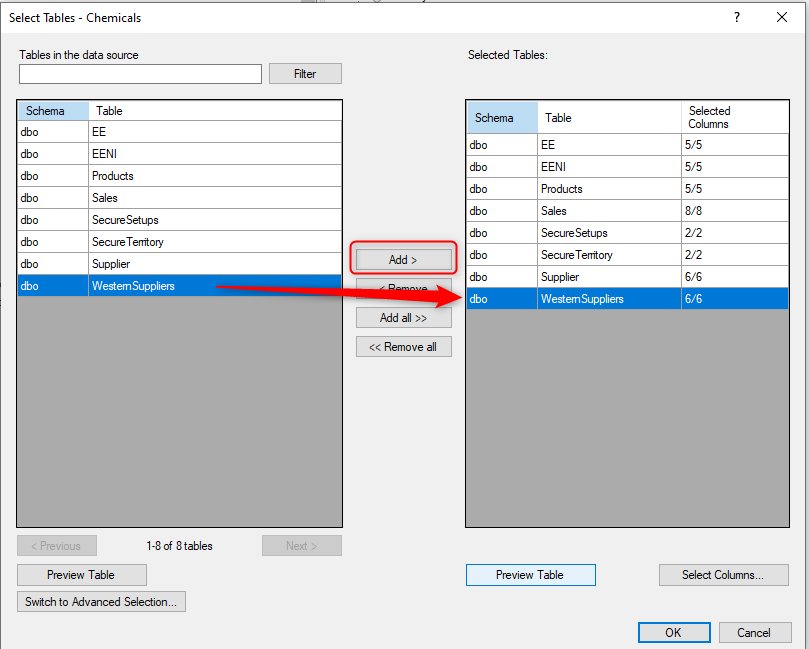
- Click the Preview button to get a view of the query table.
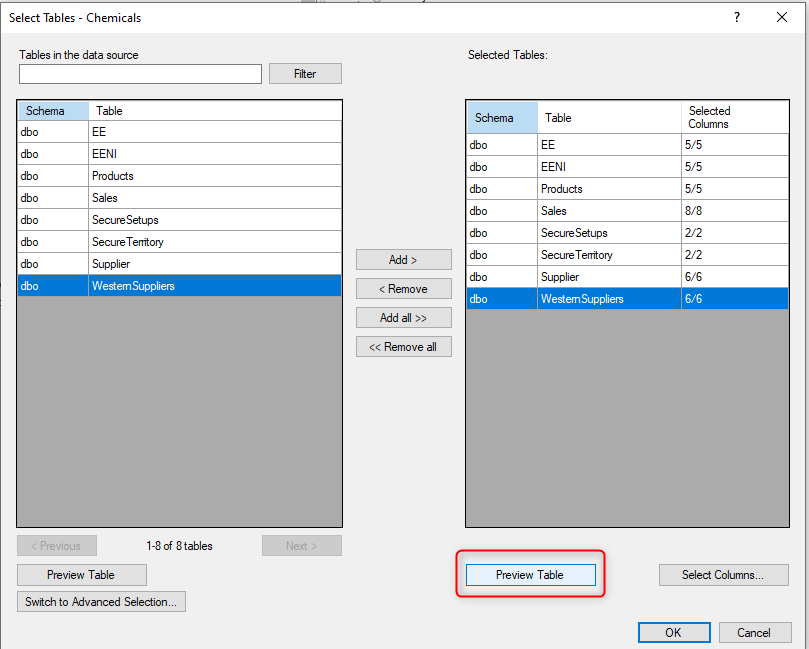
- Click the Execute button to see the data populated below.
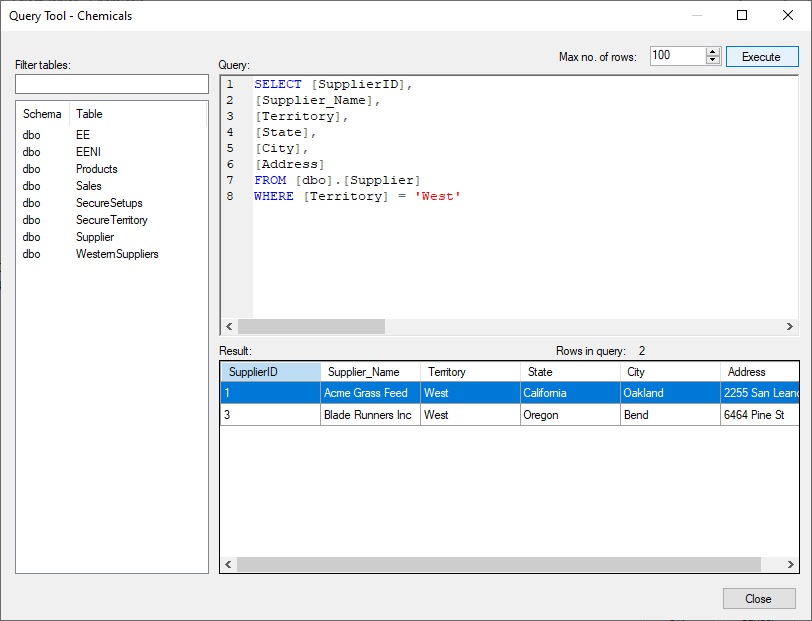
Use Subquery
The “Use Subquery” checkbox is checked by default and provides a way to use alias in the query that can later be used to later apply data selection and incremental loading rules to the query table.
Using the following query as a query table example (MyCustomerOrderLinesView)
SELECT c.CustomerId, o.OrderDate, l.* FROM Customers c
INNER JOIN Orders o
ON c.CustomerId = o.Customer
INNER join OrderLines l
ON o.OrderId = l.OrderId
The query will expose one OrderId column from OrderLines but the table also contains an OrderId column. For a data selection rule to be able to distinguish between the two OrderID column instances, the “Use Subquery” checkbox would need to be checked.
If the “Use Subquery” is not checked, then the query that TimeXtender would send would be similar to the following, which results in an “Ambiguous Column Name” message.
SELECT c.CustomerId, o.OrderDate, l.* FROM Customers c
INNER JOIN Orders o
ON c.CustomerId = o.Customer
INNER join OrderLines l
ON o.OrderId = l.OrderId
WHERE OrderId > 100
--------------------------------------------------------------
Msg 209, Level 16, State 1, Line 7
Ambiguous column name 'OrderId'.
If “Use Subquery” is checked, then the query that TimeXtender would send would look like the following instead, which mitigates the ambiguous column name condition.
SELECT CustomerId, OrderDate, OrderId, LineNum, Product, Quantity, CostPrice, LineAmount, Date, CurrencyCode FROM (
SELECT c.CustomerId, o.OrderDate, l.* FROM Customers c
INNER JOIN Orders o
ON c.CustomerId = o.Customer
INNER join OrderLines l
ON o.OrderId = l.OrderId) a
WHERE OrderId > 100
--------------------------------------------------------------
(24990 rows affected)
It may also be the case that the column names in the data source are hard to interpret and using alias names instead will make it easier for developers to use these fields in a prepare instance. The following example shows replacing letter column names with the following more descriptive alias names:
- TimeXtender Id
- Name
- LastName
- LastModifiedDate
SELECT A as Id, B as Name, C as LastName, D as LastModifiedDate FROM A_BAD_DESIGN_TABLE
Adding an incremental rule on LastModifiedDate will without "Use Subquery" cause an error: 'Invalid column name 'LastModifiedDate'



